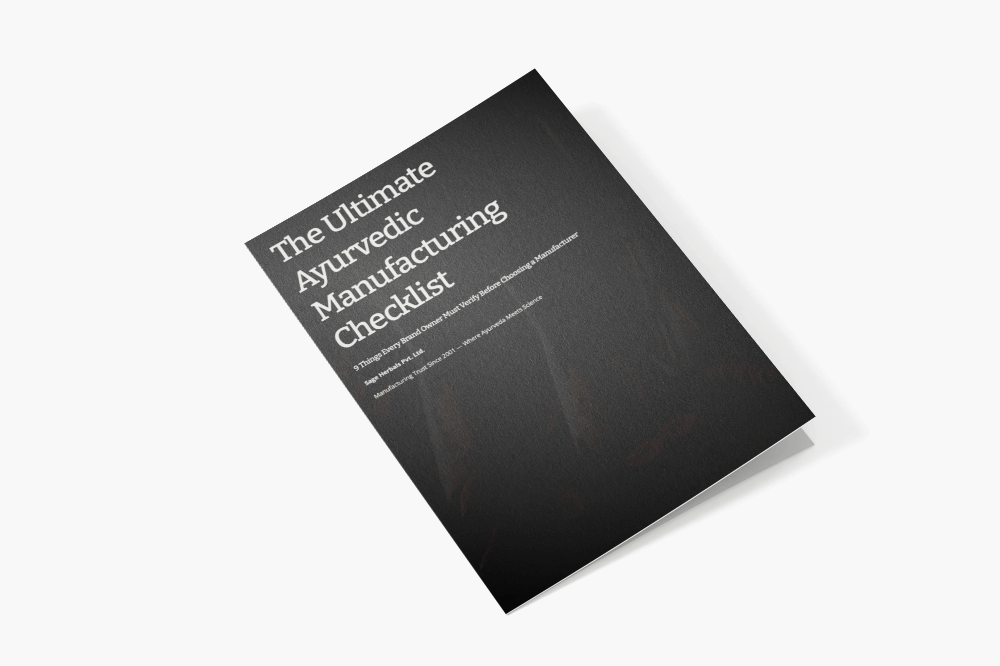Your cart is currently empty!

E-Book
The Ultimate Ayurvedic Manufacturing Checklist
Sage Herbals Pvt. Ltd.
Is A leading manufacturer, marketer, promoter and exporter of a wide range of Skincare, Healthcare, Personal Care & Beauty care products. Besides our own brand we are also engaged in Private labelling / Third party manufacturing of Ayurvedic Medicines and Herbal Cosmetics.

Collaboration is the essence of life. The wind, bees, and flowers work together, to spread the pollen.”
Amit Ray, Indian author and “spiritual master

Who will benefit most from Ultimate Ayurvedic Manufacturing Checklist
- Skincare brand owners.
- Supplement and pharma industry.
- Brand owners looking to develop their own formulations.
- Budding entrepreneur planning to launch new products.
Our Vision
Empowering common man to lead a healthier lifestyle , to come closer to nature and be able to find natural health and cosmetic solutions from the abundance of that is given to us from earth.
Our Mission
- To be a research-based herbal pharmaceutical company by maintaining the highest ethical standards in each and every step of manufacturing, marketing and other business processes.
- To achieve excellence globally by providing highest quality, clinically proven products on competitive prices to customers and to harness the power of natural herbs in the service of ailing humanity.
- To accomplish an image that speaks for itself , a organization that has established itself on the basis of research and developing and then introducing to the world products which have created un-comparable standards in terms of quality and results.
Our Certifications









The Ultimate Ayurvedic Manufacturing Checklist eBook.